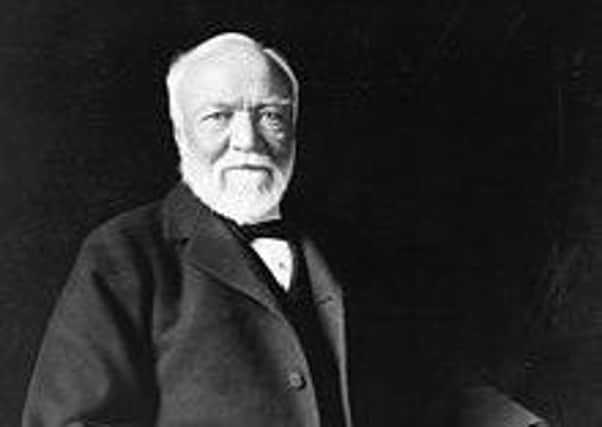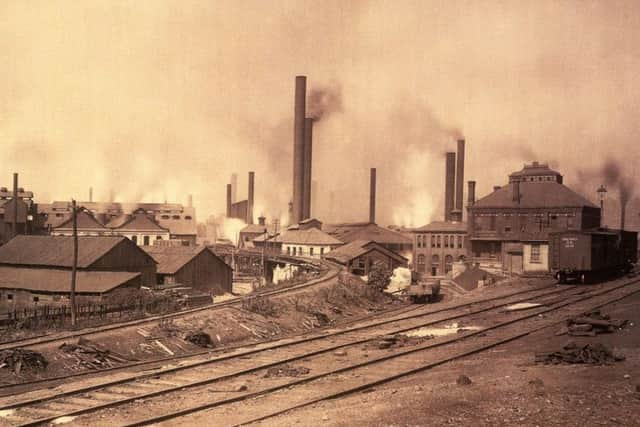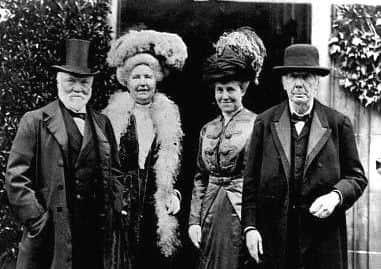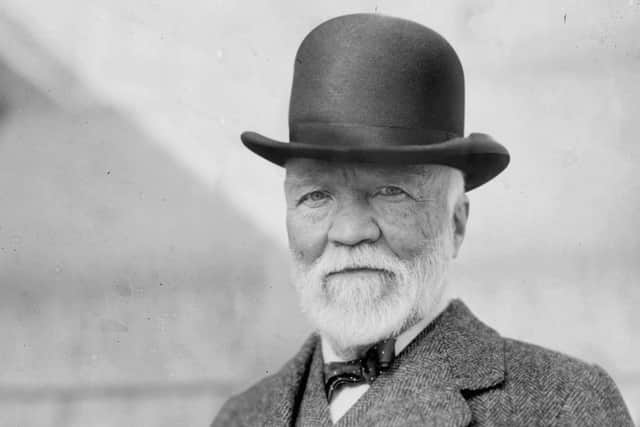The life of Andrew Carnegie


The young Carnegie was indelibly shaped by the role his family played in Fife’s textile industry.
As the industry entered decline during the 1840s, Carnegie’s father took the step of relocating the family to Allegheny in Pennsylvania in search of a better life.
Advertisement
Hide AdThe now teenage Carnegie quickly left behind his weaving roots by taking up employment at first with the Ohio Telegraph Company and latterly the Pennsylvania Railroad Company.
In a twist which was to greatly affect his philanthropy later in life, Carnegie benefited from the ‘open door’ policy of local wealthy man Colonel James Anderson’s library, borrowing books profusely in his hunger to better himself.
It is thought that Carnegie’s wonder at being given access to the library, at a time when immigrants and poor children were not widely accepted, was the catalyst for the “Carnegie libraries” that he would found later in life.
Thomas Scott, the President of the railroad company, helped Carnegie with his first insider investments into railway-related businesses.
Though illegal by modern standards, these inside investments helped the Scot to accrue capital before the onset of the American Civil War.


During the conflict, Carnegie was appointed the Superintendent of the Union’s Military Railways, ensuring that railway and telegraph lines were maintained and reopened if attacked by the Confederates.
Advertisement
Hide AdDuring this time he dodged participation in the conflict by paying someone else to take his place in the military.
Carnegie’s steady successes up to this point pale in comparison to the breakthrough made in 1868. In an effort to connect the East and West coasts of the USA by rail, the Scot invested in English inventor Henry Bessemer to mass-produce steel destined for bridges.
Advertisement
Hide AdFast-forward to 1873 and the St Louis bridge was opened to elaborate fanfare (with Carnegie securing an elephant to walk across it to demonstrate its strength). Carnegie made nearly £14m from the subsequent railroad orders and after constructing his first-ever steel plant, shifted his focus to the Manhattan skyscraper market once the railroad balloon began to deflate.


By now, the Scot’s fortune was considerable, and as a member of the South Fork Fishing and Hunting Club, Carnegie had an extensive network of contacts and friends in business and politics.
When the nearby South Fork dam overflowed in 1899, Carnegie donated millions of dollars towards the aid effort for the Red Cross and the rebuilding of the Johnstown settlement.
While the Scotsman’s first major act of philanthrophy did not go unnoticed, the efforts of one of his subordinates Henry Frick cast a shadow on the Scot’s reputation. Carnegie’s ownership of the Pittsburgh Homestead Steel Works meant that Frick was left in charge of the plant while Carnegie visited Scotland.
Frick and his staff attacked the striking workers after hours were lengthened and wages cut. Though the situation was soon resolved and Frick fired for scheming against Carnegie, the saga wounded his professional reputation.


Having reached his sixties, Carnegie began to tire of the business world and sold up to JP Morgan in 1901 in a deal worth a staggering £9bn today.
Advertisement
Hide AdEven before his retirement in 1901, Carnegie devoted his money to the provision of educational and leisure services across the world. By the time of his death, nearly 90 per cent of the man’s fortune had been spoken for by charitable causes, musical organisations and grants across the world.
One of his first actions was to build public baths back in Dunfermline in 1879, and he returned to Scotland with his mother and family in 1881 to tour the UK and lay the foundation stone of a “Carnegie library” in his home town.
Advertisement
Hide AdCarnegie’s longest-lasting contributions to society were the libraries that he funded throughout Scotland, the United States, Canada and even as far afield as the Caribbean and Malaysia. To date, over 2,300 have been built worldwide during and after Carnegie’s lifetime, which immortalised the Scotsman’s gratitude for the rich man’s library he grew up in.
Fittingly, the world’s first Carnegie library was opened in Dunfermline in 1883 using grant money from the industrialist. To this day, over 30 of the original Carnegie libraries in New York City are still in operation.
Carnegie donated over a million dollars to the construction of the Peace Palace at The Hague, the home of the International Court of Justice, in the early 1900s, despite the onset of the First World War soon after.
By the time of his death in 1919 of bronchial pneumonia, Carnegie had gifted or given away approximately £3.14bn of his fortune in today’s money.